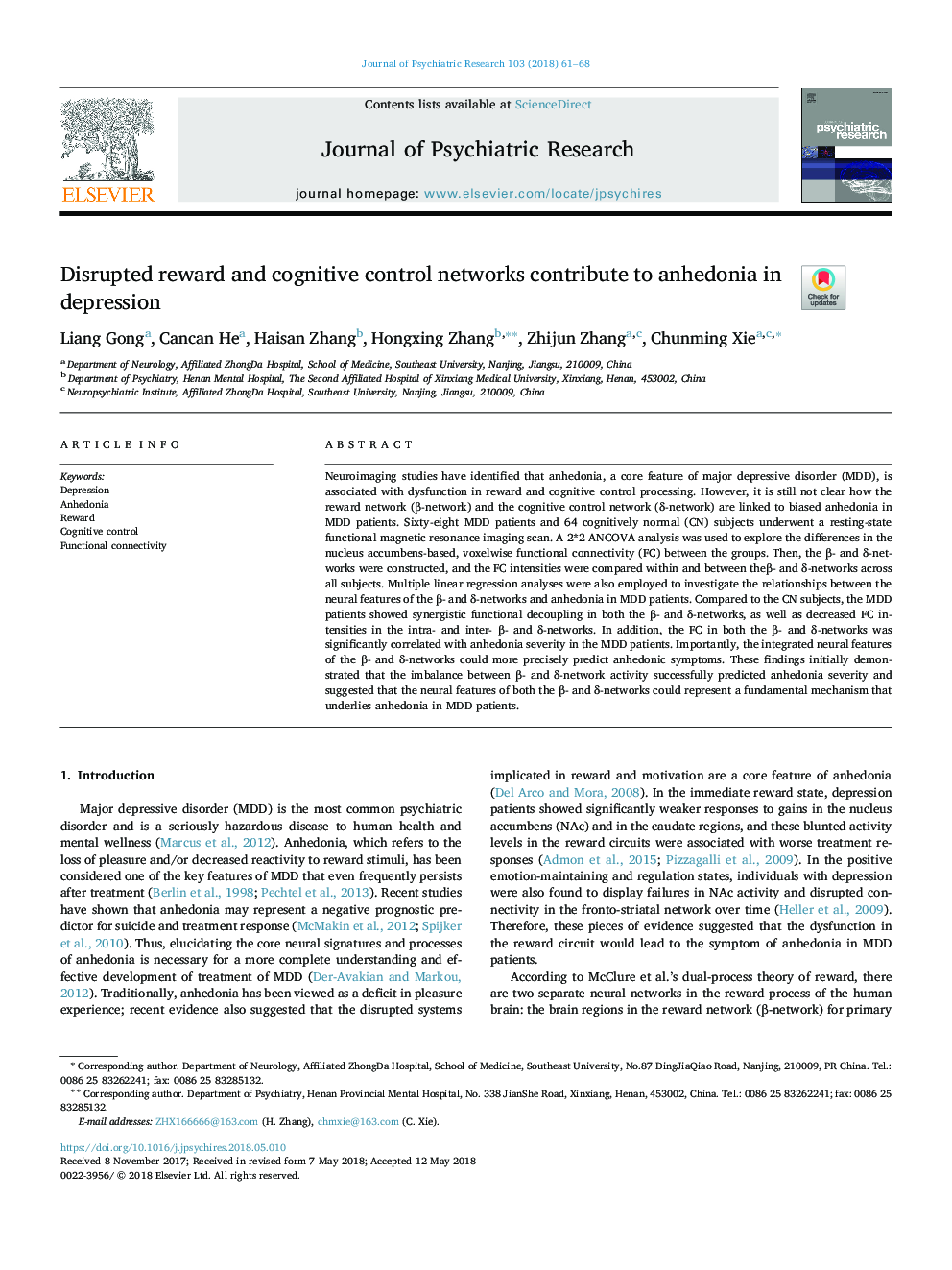| Article ID | Journal | Published Year | Pages | File Type |
|---|---|---|---|---|
| 6799450 | Journal of Psychiatric Research | 2018 | 8 Pages |
Abstract
Neuroimaging studies have identified that anhedonia, a core feature of major depressive disorder (MDD), is associated with dysfunction in reward and cognitive control processing. However, it is still not clear how the reward network (β-network) and the cognitive control network (δ-network) are linked to biased anhedonia in MDD patients. Sixty-eight MDD patients and 64 cognitively normal (CN) subjects underwent a resting-state functional magnetic resonance imaging scan. A 2*2 ANCOVA analysis was used to explore the differences in the nucleus accumbens-based, voxelwise functional connectivity (FC) between the groups. Then, the β- and δ-networks were constructed, and the FC intensities were compared within and between theβ- and δ-networks across all subjects. Multiple linear regression analyses were also employed to investigate the relationships between the neural features of the β- and δ-networks and anhedonia in MDD patients. Compared to the CN subjects, the MDD patients showed synergistic functional decoupling in both the β- and δ-networks, as well as decreased FC intensities in the intra- and inter- β- and δ-networks. In addition, the FC in both the β- and δ-networks was significantly correlated with anhedonia severity in the MDD patients. Importantly, the integrated neural features of the β- and δ-networks could more precisely predict anhedonic symptoms. These findings initially demonstrated that the imbalance between β- and δ-network activity successfully predicted anhedonia severity and suggested that the neural features of both the β- and δ-networks could represent a fundamental mechanism that underlies anhedonia in MDD patients.
Related Topics
Life Sciences
Neuroscience
Biological Psychiatry
Authors
Liang Gong, Cancan He, Haisan Zhang, Hongxing Zhang, Zhijun Zhang, Chunming Xie,
